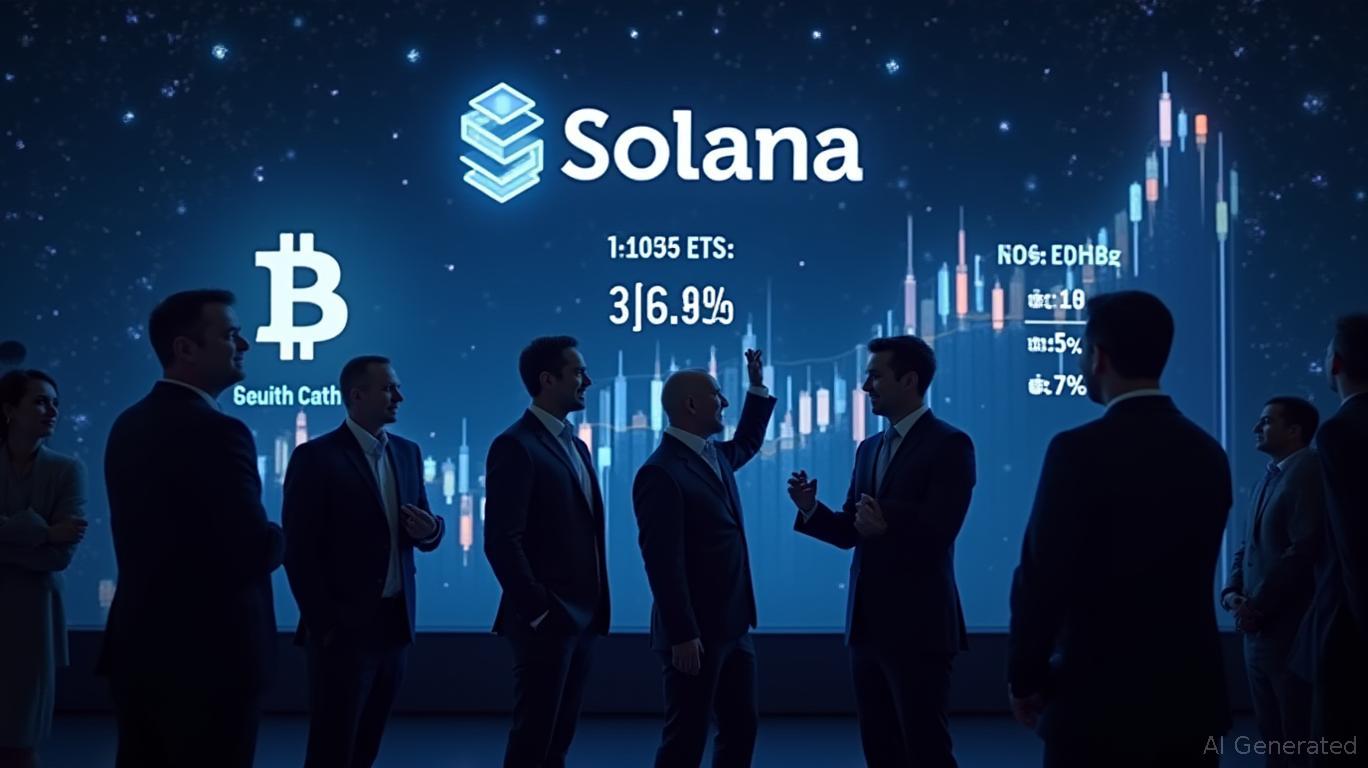Spot
Solana
(SOL) exchange-traded funds (ETFs) have sparked intense investor interest, with Bitwise's BSOL and Grayscale's GSOL together drawing close to $200 million in new investments over their initial four trading sessions, as detailed in a
TradingView report
. Bitwise’s BSOL led with $197 million in net inflows, while Grayscale’s GSOL contributed $2.2 million, totaling $199 million by October 31. These inflows reflect increasing institutional trust in Solana, a blockchain recognized for its rapid processing capabilities and growing significance in stablecoin transactions and asset tokenization, according to
TradingView analysis
.
The strong performance of these ETFs stands out when compared to
Bitcoin
and
Ethereum
funds. On a day when spot Bitcoin and Ethereum ETFs experienced outflows of $191.6 million and $98.2 million respectively, a
Cointelegraph report
highlighted that Solana ETFs marked their fourth straight day of positive inflows. Experts attribute this shift in capital to investors seeking staking-related returns, with Bitwise’s BSOL offering an approximate 7% staking yield. Grayscale’s GSOL, which launched a day later than BSOL, also stakes its assets and plans to distribute 77% of staking rewards to its investors, as described in a
The Block report
.
Despite these inflows, Solana’s price has lagged behind the broader cryptocurrency market. The token climbed 0.78% to $195.58 in recent trades, according to a
CoinDesk report
, but has slipped below important technical support, raising concerns about a possible decline toward $120. This price weakness contrasts with the ETFs’ robust inflows, as investors seem to be reallocating funds from Bitcoin and Ethereum rather than introducing new capital into Solana, according to Yahoo Finance.
The enthusiasm for Solana ETFs is further supported by notable acquisitions and staking moves. Upexi, a
SOL
treasury company, revealed it had acquired an additional 88,750 SOL, increasing its total to 2.106 million tokens—worth about $397 million at the end-of-month price of $188.56, as reported in a
Lookonchain post
. Nearly all of Upexi’s tokens are staked, generating around $75,000 in daily income with yields ranging from 7% to 8%.
Market observers remain cautiously hopeful about the ETFs’ long-term effects. Bitwise’s Chief Investment Officer Matt Hougan pointed to Solana’s potential as a foundation for tokenized assets, noting the platform holds $40 billion in user assets within its applications, according to Yahoo Finance. Still, technical analysts caution that if the price fails to stay above $155, further declines could follow, as mentioned in Cointelegraph analysis.
The launch of these ETFs has also heightened competition among crypto funds. Bitwise’s BSOL ranked 16th worldwide for weekly inflows, surpassing the combined inflows of BlackRock’s Bitcoin and Ethereum ETFs, according to TradingView. Meanwhile, Grayscale’s GSOL faces obstacles such as a higher management fee (0.35% compared to BSOL’s 0.2%) and a delayed rollout, which analysts say have affected its performance, as reported by The Block. As the market adapts to these changes, Solana’s ecosystem continues to grow—its stablecoin market cap has surged 200% year-to-date—indicating greater DeFi liquidity and rising institutional involvement, per CoinDesk. Whether the optimism around these ETFs will lead to lasting price appreciation for SOL remains uncertain, but the record-setting inflows mark a significant shift in investor focus toward alternative cryptocurrencies.
